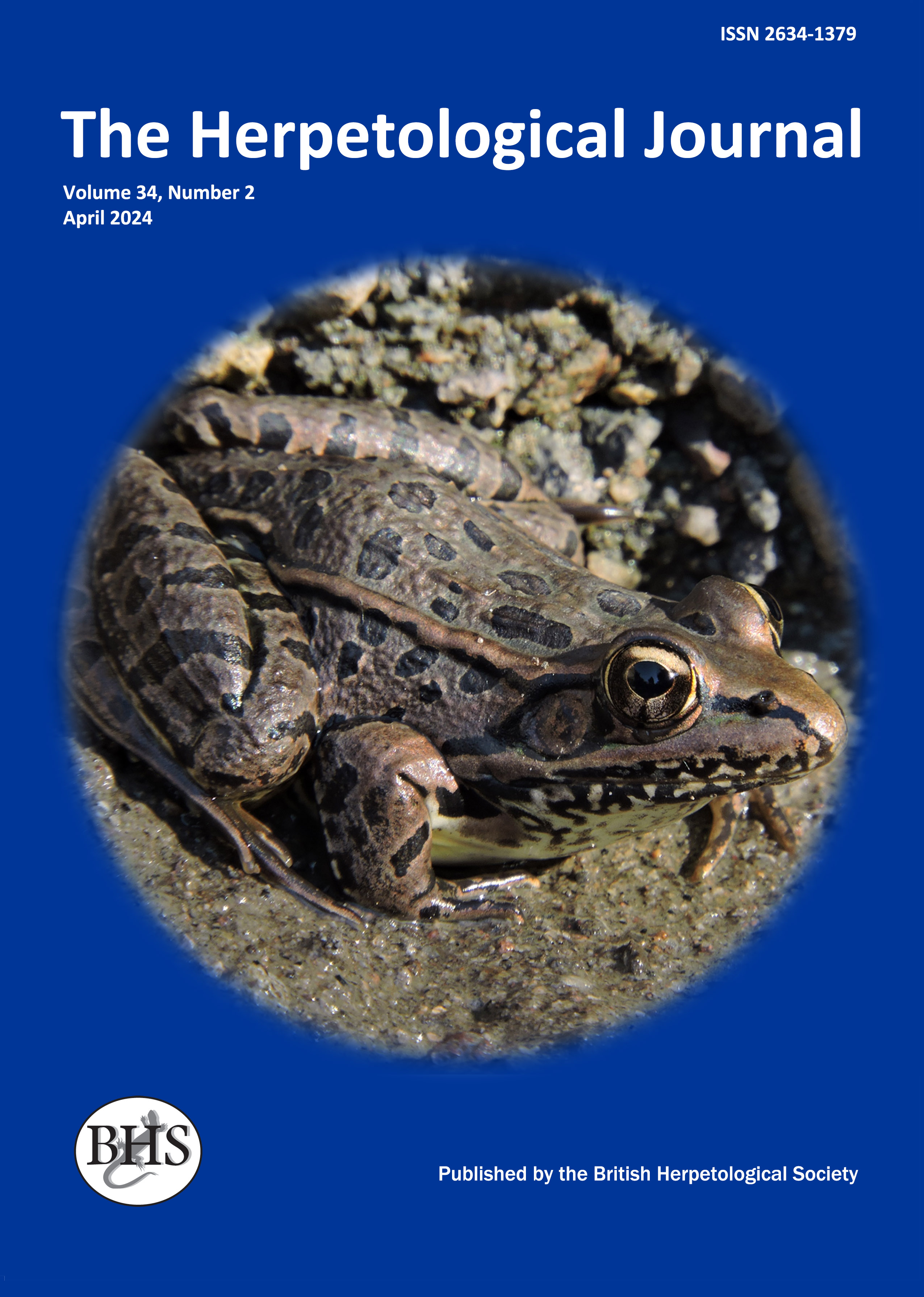
The Herpetological Journal
The Herpetological Journal is the Society's prestigious quarterly scientific journal. Articles are listed in Biological Abstracts, Current Awareness in Biological Sciences,Current Contents, Science Citation Index, and Zoological Record.
ISSN 0268-0130
2021 Impact Factor from Clarivate for the Herpetological Journal is 1.194, an increase of 0.332 from 2020.
pdf 04. Aliens in the backyard: Did the American bullfrog conquer the habitat of native frogs in the semi-deciduous Atlantic Forest?
275 downloads
Open Access
https://doi.org/10.33256/hj30.2.9398
pp. 93-98
Authors: L. Ferrante, F. B. Baccaro & I. L. Kaefer
Abstract: The American bullfrog Lithobates catesbeianus has a natural distribution in North America, but was spread by human activities in different regions around the world. It is listed as the most invasive amphibian species, affecting terrestrial and aquatic ecosystems and the community of native species. In addition, the American bullfrog is extensively associated with lethal pathogens, with high correlation of the presence of this species with population declines and extinctions. Here we test if this alien species has spread through the landscape, establishing populations at new locations. We used diverse methods including georeferencing of satellite images, ethnobiological interviews and field data to evaluate the dispersion and effects of L. catesbeianus introduction on amphibian composition, species number, and density of individuals in forest fragments in an Atlantic Forest landscape. We did not find any relationship between density of individuals, number of species or composition of the native anuran assemblages in forest fragments in relation to the presence or proximity of American bullfrog introduction points. Additionally, we found that the dispersion potential of this species in the studied landscape is zero, as it was only found in those fragments where it was specifically introduced 15 years ago. The species has not established new populations in the landscape. Although exotic, L. catesbeianus thrives in lentic habitats and has no apparent effect on the structural metrics of the native anuran assemblage. Despite this alien species exhibiting a capacity to adapt and survive at the point of introduction, its potential for propagation is limited probably by the fragmented terrestrial landscape and regional stream network.
Keywords: amphibians; anurans; biological invasions; community ecology; exotic species; fragmented landscape; freshwater biology; landscape ecology.

